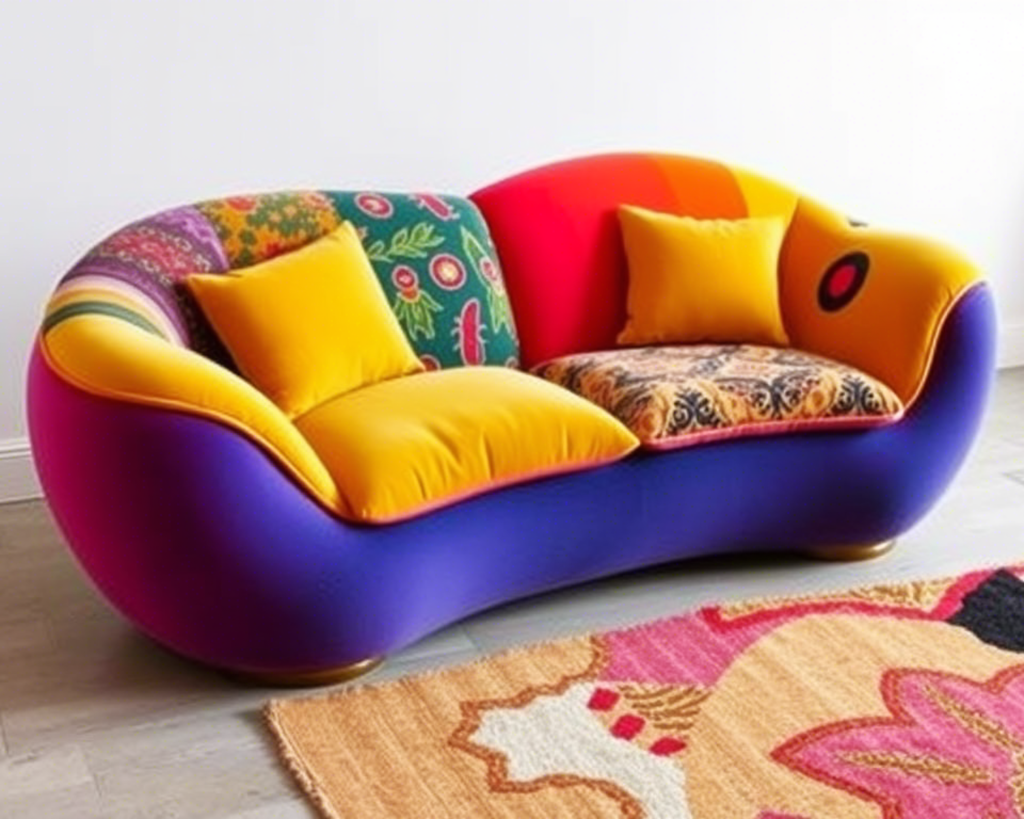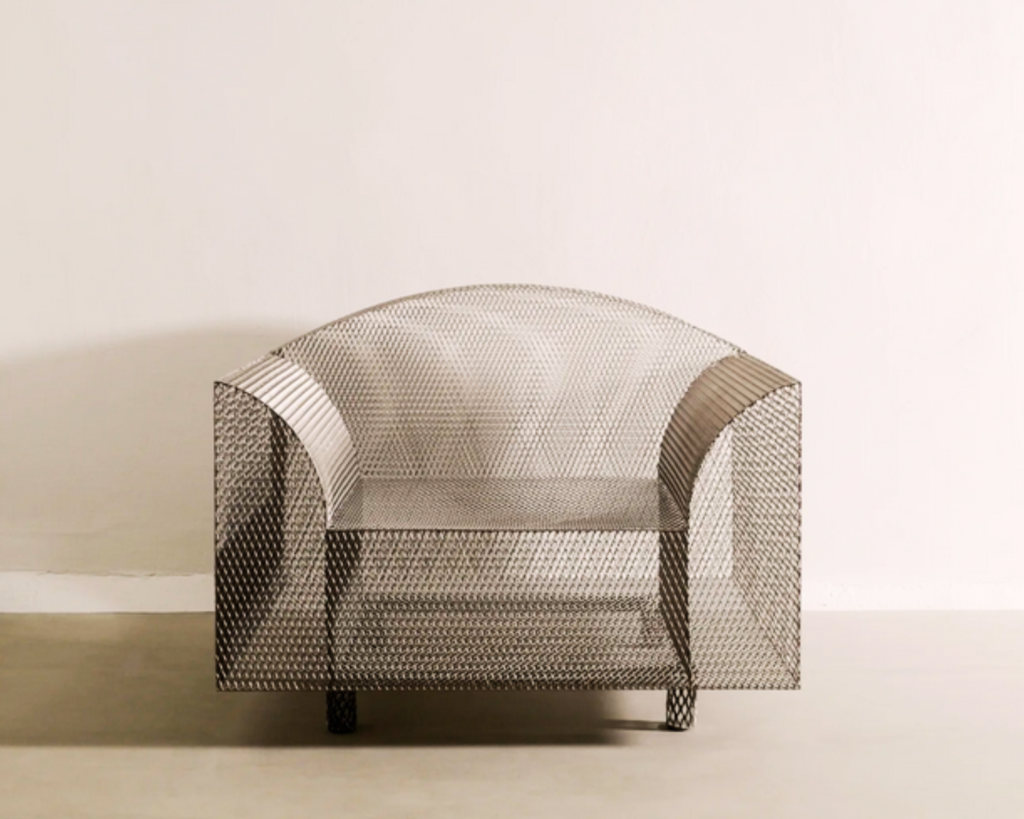In the late 20th century, the emerging trend of modern decor in buildings, in galleries, and in public spaces was to confront the rigid-style mandates of modernism. Postmodern furniture characteristics developed as a vibrant, rule-breaking occasion that paraded eclecticism, humor, and cultural references. In contrast to modernism, the master of minimalism and postmodernism was willing to ask the provocative question: Why can’t furniture be fun? From asymmetrical bookshelves that could double as abstract art to hot pink chairs, the design movement has altered the way we relate to everyday items. Let’s explore some of the postmodern furniture characteristics that define postmodern furniture and the lingering influence it imposes on modern design.
- 1. “Form Follows Fun”: The Modernist Rebellion
- 2. Time Traveling with a Glue Gun: Historical Mashups
- 3. Color Palettes That Scream “LOOK AT ME!”
- 4. Postmodern Furniture Characteristics: Furniture That’s in on the Joke
- 5. The Great Material Mashup: Cardboard? Why Not!
- 6. Comfort Optional, Conversation Mandatory
- 7. “Make It Your Own”: DIY Spirit
- 8. Furniture with a PhD in Sass
- 9. Postmodernism’s Cool Kids Today
- Conclusive Thoughts
1. “Form Follows Fun”: The Modernist Rebellion
Modernist furniture of the mid-20th century was like that ‘overly serious friend’ who only wears beige. Think Mies van der Rohe’s Barcelona Chair—elegant, yes, but about as playful as a tax audit. Postmodern designers? They were the cool art students who doodled on their textbooks.
Ettore Sottsass, the godfather of postmodernism. In 1981, he founded the Memphis Group, a ragtag team of Italian designers who threw the modernist rulebook out the window. Their mission? Make furniture that feels something. No more cold steel and sterile lines. Instead, they crafted pieces like the Carlton Room Divider, a zigzagging riot of colors and shapes that looked like a robot’s jungle gym. It didn’t just divide spaces—it divided opinions. And that was the point.
2. Time Traveling with a Glue Gun: Historical Mashups
Postmodernism didn’t just borrow from history—it threw a costume party where Marie Antoinette hung out with Elvis. Designers raided every era: Baroque curves, Art Deco glitz, 1950s diner kitsch. The result? Furniture that felt like an inside joke between centuries.
Michael Graves’ Plaza Dresser (1981) is a perfect example. At first glance, it’s a staid storage piece. Look closer, and you’ll spot tiny classical columns on top, like a dollhouse Parthenon. It’s as if Graves whispered, “What if George Washington had a skateboard?” This cheeky blending of high and low culture made postmodern pieces feel rebellious yet weirdly familiar—like meeting your grandma at a punk concert.
3. Color Palettes That Scream “LOOK AT ME!”
Vibrant color palette is one of the prime postmodern furniture characteristics. Modernism loved whispering in muted tones. Postmodernism? It blasted air horns of color. We’re talking electric blue sofas, lemon-yellow lamps, and pink tables that could double as neon signs. These weren’t just colors—they were declarations.
Javier Mariscal’s Garriris Chair (1987) looks like it ate a box of crayons and threw up joy. With its chunky primary colors and cartoonish curves, it’s less “seat” and more “3D Lisa Frank sticker.” Even lamps got wild—the Memphis Group’s Super Lamp (1981) paired zebra stripes with polka dots, basically yelling, “I’m here to party!”

4. Postmodern Furniture Characteristics: Furniture That’s in on the Joke
Postmodern designers loved poking fun—even at themselves. Philippe Starck’s Louis XX Chair (1992) is a perfect example. It takes the fancy pants Louis XV style, ditches the velvet for plastic, and adds a goofy grin. It’s like seeing a king in flip-flops.
Then there’s Peter Shire’s Big Sur Sofa (1988). With its jagged angles and mismatched cushions, it’s less “sit here” and more “climb this modern art sculpture… if you dare.” These pieces didn’t just want to be used—they wanted to make you laugh, scratch your head, or call your friend and say, “You gotta see this!”
5. The Great Material Mashup: Cardboard? Why Not!
Material mashup is one of the most popular postmodern furniture characteristics. Modernists prized “noble” materials like marble and walnut. Postmodernists? They raided the junk drawer. Laminate—yes, that plasticky stuff from cheap diners—became their canvas. Corrugated cardboard? Perfect for chairs!
Frank Gehry’s Wiggle Chair (1972) made cardboard look cool way before eco-chic was a thing. Meanwhile, the Memphis Group’s Tahiti Table (1981) slapped a leopard-print laminate leg on a table, because why should cheetahs have all the fun? This wasn’t just recycling—it was a middle finger to design snobbery.
6. Comfort Optional, Conversation Mandatory
Ever sat in a chair that felt like a yoga pose? Postmodern designers like Shiro Kuramata prioritized “wow factor” over ergonomics. His ‘How High the Moon Chair’ (1986) is all steel mesh—beautiful, yes, but about as cozy as a shopping cart.
But that’s the point. These pieces weren’t just furniture—they were art you could (technically) use. Like Michael Graves’ Portland Building (1982), which draped architecture in giant ribbons and pastels, postmodern furniture screamed, “I’m here to make you feel something, not just store your magazines!”

7. “Make It Your Own”: DIY Spirit
Postmodernism hated cookie-cutter design. Gaetano Pesce’s UP5 Donna Chair (1969) literally molded to your body, while doubling as a feminist icon—its attached ottoman symbolized society’s chains on women. The Casablanca Sideboard (1981) let you rearrange shelves like Lego blocks.
This wasn’t just furniture—it was a collaboration. Imagine buying a bookshelf and thinking, “Hmm, what if I stack it sideways and paint it lime?” Postmodernism nodded and said, “Do it. We dare you.”
8. Furniture with a PhD in Sass
Every postmodern piece had something to say. Sottsass’ Valentine Typewriter (1969)—bright red and plastic—mocked the gray office grind. His Ultrafragola Mirror (1970), with its pink waves, asked, “Why be subtle when you can be fabulous?”
These weren’t mute objects. They gossiped about consumerism, teased elitism, and winked at pop culture. Owning one was like having a debate partner who doubled as a coffee table.
9. Postmodernism’s Cool Kids Today
Though the 1980s are gone, postmodern vibes are everywhere. IKEA’s Delaktig sofa (2017)—co-designed by Tom Dixon—lets you snap on arms, tables, even lights. It’s like adult Legos, minus the foot-pain.
Brands like Kartell make lamps that look like melted lollipops, while designers like Patricia Urquiola mix eco-materials with Memphis flair. Even Target sells postmodern-inspired plant stands now. The movement’s spirit—that design should delight, not just function—lives on in TikTok-era homes craving personality.
Conclusive Thoughts
Postmodern furniture matters because it reminds us that homes shouldn’t be showrooms—they should tell our stories. In a world of sterile “quiet luxury” and sad beige rooms, postmodernism is the friend who shows up in sequined boots and says, “Live a little!”
So next time you see a neon chair or a bookshelf that defies gravity, smile. That’s not just furniture—it’s a revolution that started with some Italians, a glue gun, and a glorious “What if?” And honestly? We could all use more of that energy.

